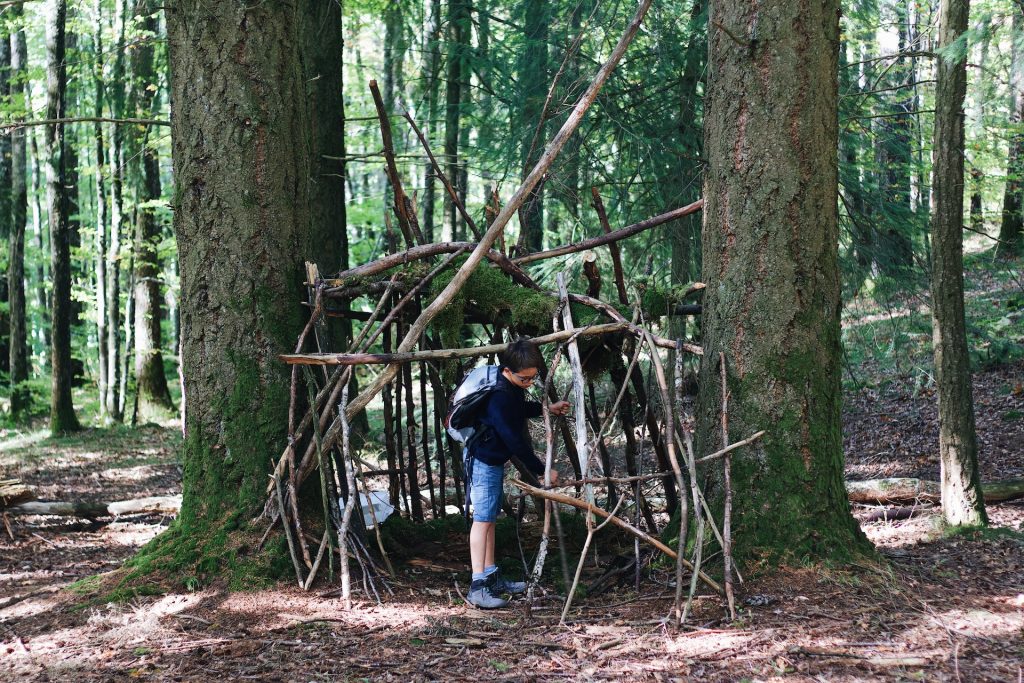OK, so you have been prepping for this for some time now. Your bug-out bag is packed, but are you truly ready to bug out? Bugging out is more than simply having a stocked bag and leaving your home. You can’t run about aimlessly hoping to get to safety, you will need a well prepared and practiced routine, multiple evacuation routes, and a well stocked predetermined destination, as well as alternative plans in case your first option is not available.
What are the most likely emergency scenarios you may face in your area? It is not much use preparing for a flash flood in Arizona, or a riot if you live in the middle of nowhere. Your preparations should be carefully planned to suit your own personal situation to avoid being without critical equipment, or overloading with items you will never need – imagine 50 pounds of snow shoes and blankets if you are bugging out on foot in the middle of summer.

The most crucial element to bugging out is knowing WHEN to leave. There is no point in upheaving the family and wasting valuable resources traveling hundreds of miles to your bug-out location if there is only an advisory saying there MIGHT be a disaster, but you definitely do not want to wait until your house is falling down and the roads are clogged with people trying to escape. You should make yourself familiar with the warning signs of a disaster. Are animals behaving strangely or mass-evacuating the area? are there physical signs such as smoke, severe storms, or extreme wind? It is a good idea to keep a battery or hand-crank radio available so that you can listen for weather advisories even if there is a blackout. Remember – if there is an official evacuation order, it is already too late.
A very important factor in your bug-out plan is who is in your party? are you going alone, or do you have friends, family or even pets with you? are all members in your party physically able to travel independently, or will some need assistance to carry items or even walk? If you have small children or elderly people, you will have to prepare a bug-out vehicle that can safely transport them, and be prepared for the possibility that you may have to carry them yourself if things get bad. It is a good idea to have set meeting points along your route in the event that people may become separated, and attach the child’s name and your contact details to children’s clothing, or on a lanyard in the event that they become lost and may be scared or confused, and unable to communicate their details properly. Of course in a total grid down scenario, there will be no phones, so it may be extremely difficult to reunite with lost family members. Because of this, it is extremely important to practice your bug-out routine with your children as often as possible to get them used to the fast-paced and potentially frightening steps of evacuation. The more familiar everyone is with what to do and how to do it, the less likely it is that anyone will panic or become separated from the group.

Another important consideration is how long do you anticipate having to be away? will it be a few days, weeks, or is there an actual possibility that you may never be able to return home? If your bug-out is only likely to be a short time period and localized, you can probably afford to only move a relatively short distance, and can pack a little lighter, especially if you are able to stay in an unaffected area where you can still shop for supplies. If the emergency is more extreme, you will need to ensure that you have the ability to put sufficient distance between you and any danger. This will mean having reliable transport, adequate supplies, and a safe location to escape to. A large disaster may mean that many cities are affected, and they WILL become very dangerous as people panic and supplies dwindle. In the event of a full scale disaster, you probably won’t have a home to return to, so will you be prepared to start over elsewhere? if possible it is a great idea to have another property that has been prepared with supplies and equipment to ensure that you can survive, even if societal structure never fully returns. It is far easier to have your supplies and equiptment ready at your bug-out location than trying to cram everything into a vehicle in an emergency. This will be easy to do if you pack supplies every time you perform your bug-out drills, and leave them in your new location.

Another possibility is that you will need to take your pets or even some livestock with you, especially if you will be gone more than a few days. There are many cases of people refusing to leave their homes in a disaster because emergency services refuse to evacuate their pets with them, because for most people, their animals are their family. You should ensure that you have animal crates ready, and that your pet is familiar with them – the last thing you want to be doing in an emergency is fighting to get a very frightened animal into a travel container, especially if it is large or strong like a horse! Practice your bug-out drills with your pets as often as possible, and ensure that they have their own bug-out bag containing food, first aid supplies, and a water dish and bottle. If it is simply not viable to take your animals with you, be sure you have a method of increasing the chance of their survival until you return. For many animals the safest option is simply marking them with some form of identification, and turning them loose. Horses and livestock will follow a fence and escape to safety as long as the gates are left open. Dogs and cats are also very capable of finding their way to a safe location and finding food. You may also want to consider having an alternative home arranged, or even humanely euthanizing your animals if it is very likely that you will never be able to return, or that they will more than likely be killed in a disaster.
The most important thing to remember when bugging out is to always have a backup plan, and backups for your backup! things do not always go as planned, especially in a chaotic situation, and two is one, one is none. NEVER count on anything, no matter how well planned and rehearsed it is. Even if you rehearse a bug-out and have it perfected so that everyone is packed and out in two or three minutes, in an actual emergency adrenaline can easily cause people to panic or freeze, and plans can easily be forgotten, things can get left behind, and family members can become separated, especially if you have to travel in separate vehicles or from different starting locations.
